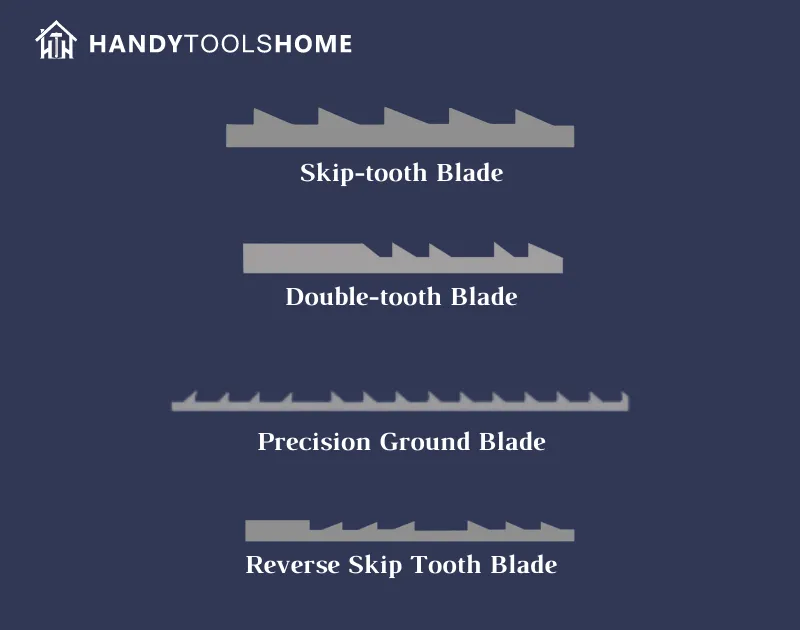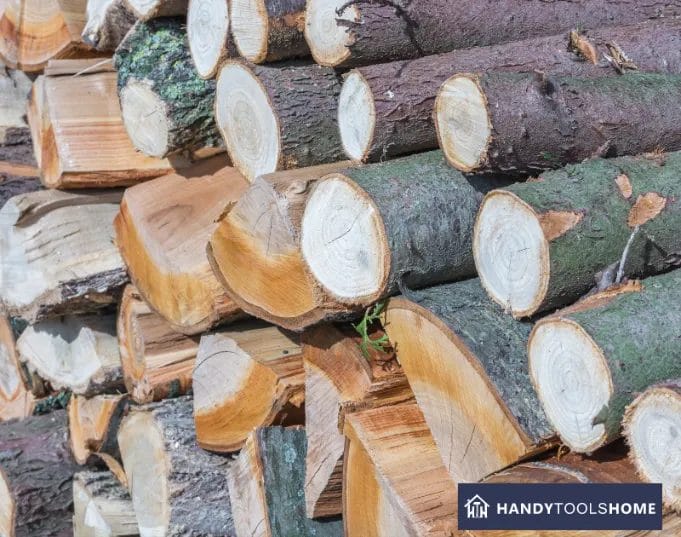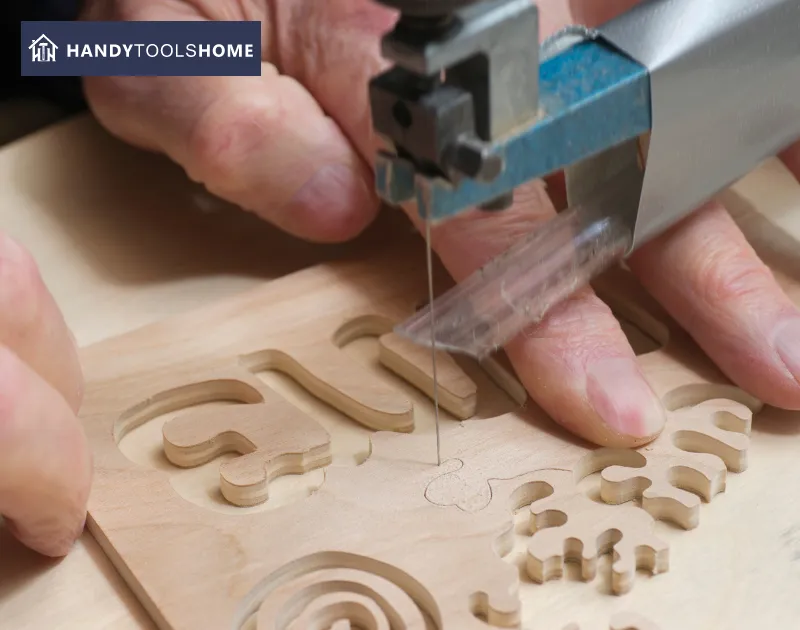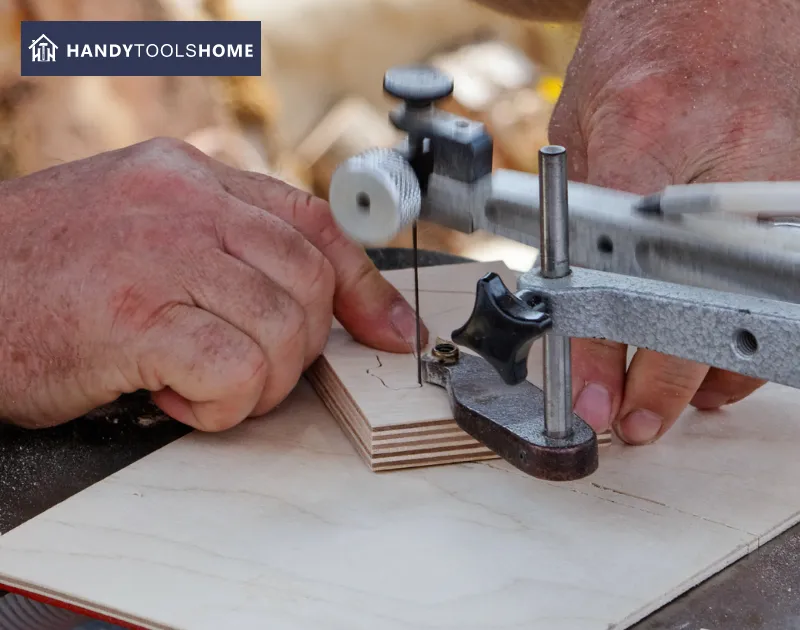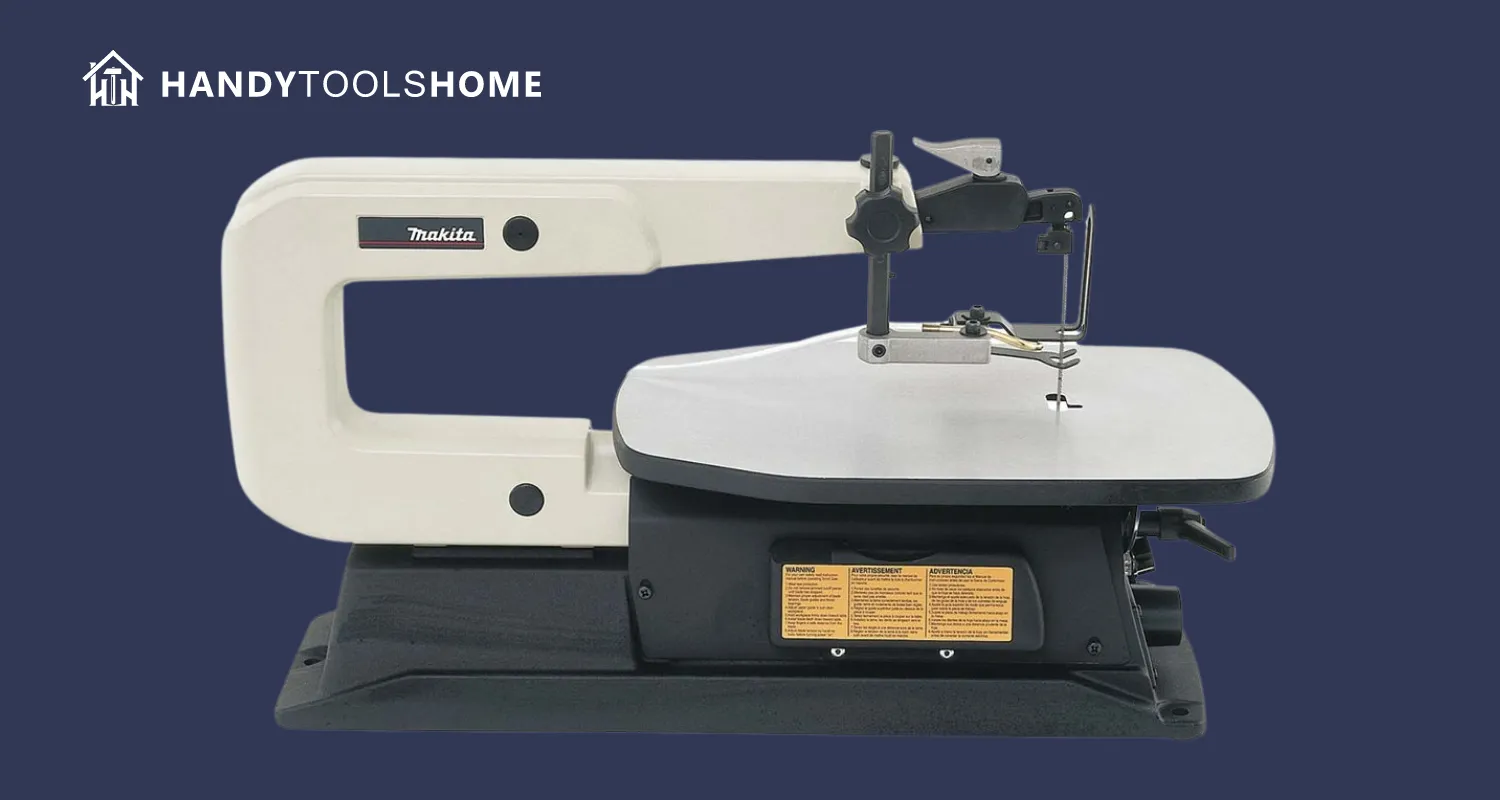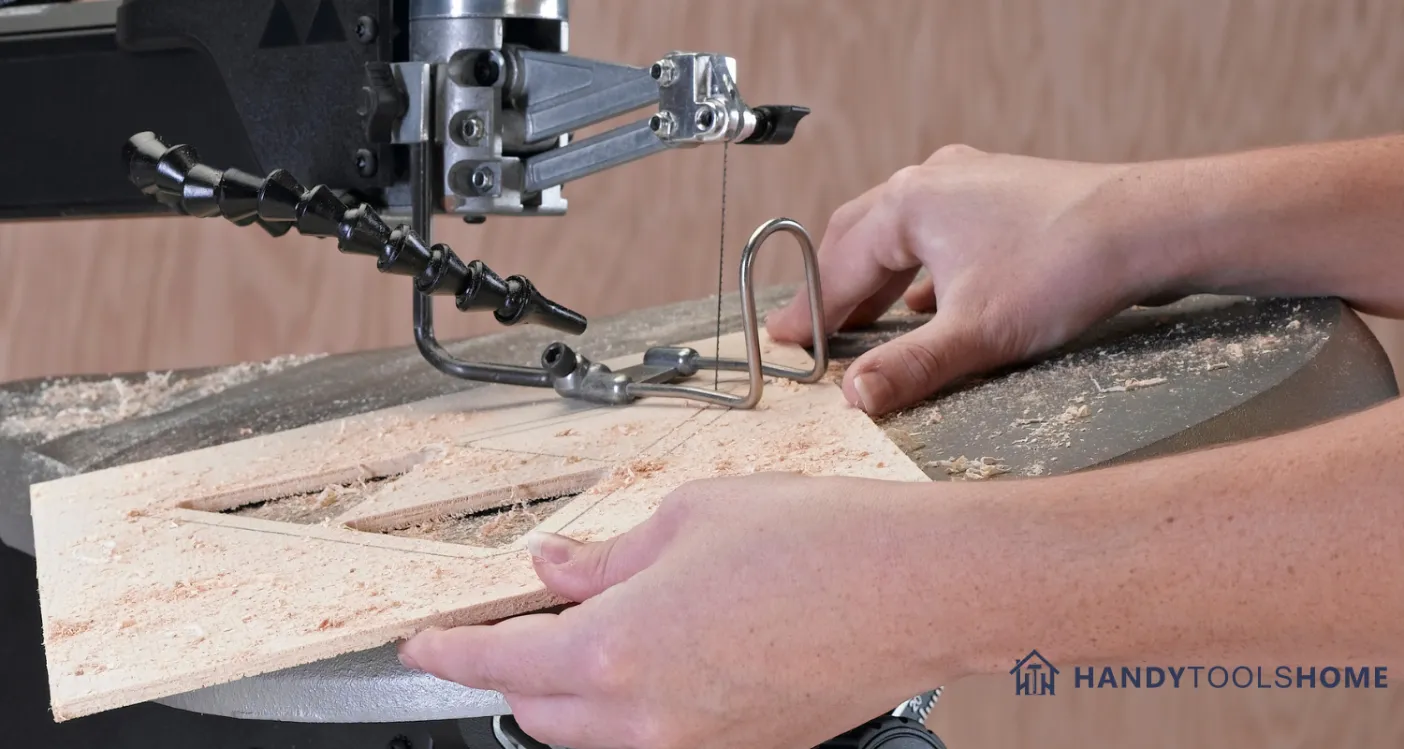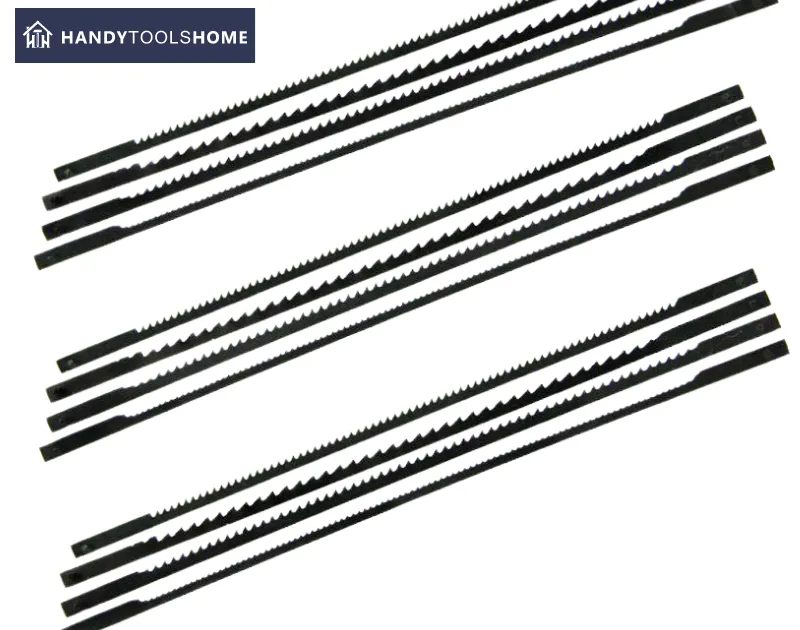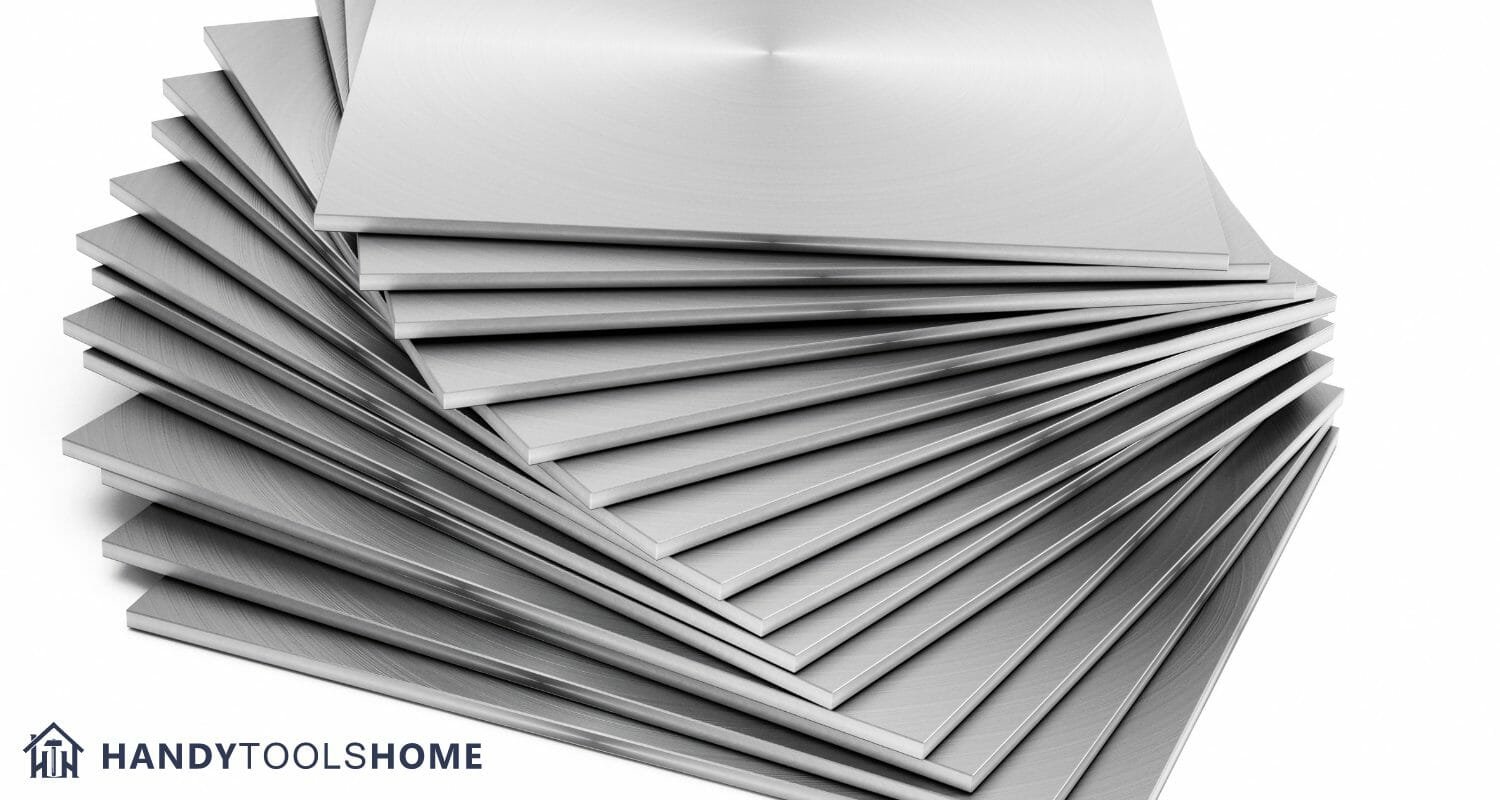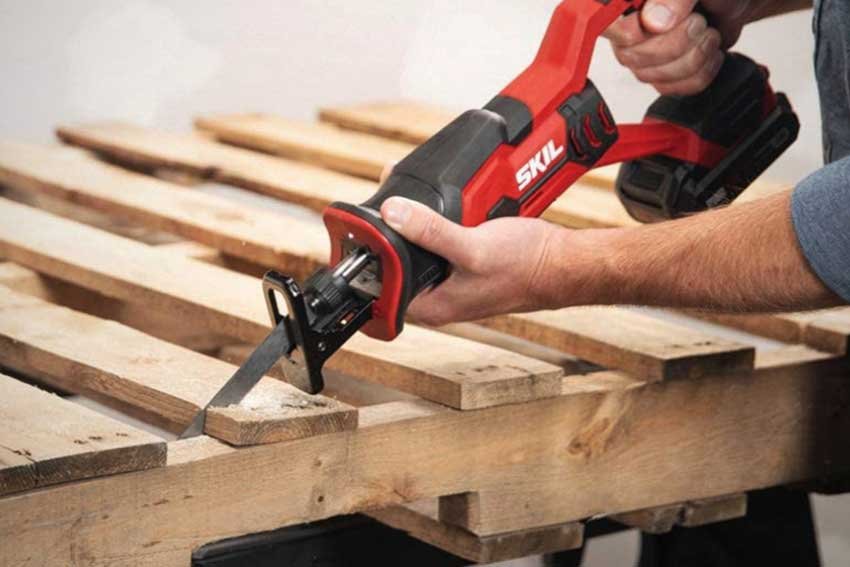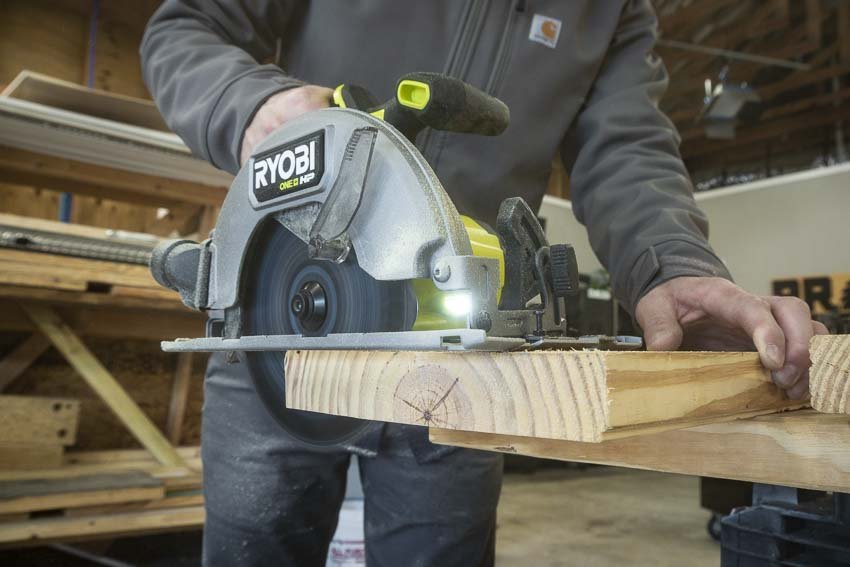Can a Scroll Saw Cut Thick Wood? - Our Guide
If you looking to cut some thick lumber with your scroll saw, you might be wondering if these power tools can handle such a heavy-duty task without breaking.
A scroll saw can typically manage to cut wood up to 2-inches thick, but you have to make you are using the right blade. The ideal thickness of wood is between 1/4-inch and 3/4-inch.
We have composed a short guide below which will explain the types of blade you need for cutting thick wood, how thick of metal material a scroll saw can cut, factors to consider before cutting thick wood as well as some safety tips for when it comes to cutting your wood.
Which Is The Proper Blade Choice For Cutting Thick Wood?
Before you can start to cut any kind of thick wood you have to make sure that you are using a variety of blades that have a wide design and less TPI (teeth per inch) to handle the kind of wood. This will produce a rough cut in denser woods but will get the job done.
Using a standard blade to try and cut thicker wood will cause it to snap or overheat, you should also use the largest blade such as a #7 blade for cutting any wood such as cherry which are hard and also thick, stick to plain-end blades for ease of change.
Double-tooth blades, precision ground blades and spiral blades are the best for cutting the hardest wood and thick pieces of wood.
We have listed some other blade types you can find on the market and their uses below -
- Standard scroll saw blades - These are larger blades with more space in between each teeth.
- Skip tooth blade - Best for beginners and cutting thicker wood with a space in between each tooth.
- Double tooth blade - Cuts slow and smooth for accuracy.
- Reverse skip tooth blades - For cutting thinner wood like plywood these two-way cut blades stop splintering.
- Precision ground blades - The teeth of these blades are ground to shape giving a sharp and smooth cut to your workpieces, they are not for beginners.
- Crown tooth blades - These blades are slow and best for cutting plastic due to their crown-like teeth.
- Spiral blades - Spiral blades have teeth in all directions, making them suitable for rough cuts in harder wood.
Can I Cut Thick Metal With My Scroll Saw?
Scrolls saw with a premium blade can also be used to cut thick metal such as steel, but you have to make sure this is no thick than 1/8-inch. This is because metal is heavier duty than wood and will wear out your blade fast due to the friction created while cutting.
You should avoid ordinary blades when cutting thick metal and stick to using skip tooth blades or crown tooth blades.
Factors To Consider Before Cutting Thick Wood
There are a few important factors to consider before you start cutting which will influence how well of a cut you can make in your thick wood.
We have listed them below to help you out.
Speed Of The Scroll Saw
If you are going to be cutting wood that is thick with your scroll saw then you should make sure that your scroll saw has variable speed, you will likely need to go fairly slow when cutting thicker wood to avoid the blade from overheating and getting too much pressure.
Never try and force a blade through thick stock at a high speed as a safety precaution, you could also damage the blade!
Type Of Wood
You need to consider the kind of wood you are planning to cut, for example, thick softwood is much easier to cut than thick hardwood as these are dense woods.
We will go into further detail about the kinds of wood you can cut with your scroll saw below.
Soft Woods
- Cedar.
- Plywood.
- Poplar.
Hard Woods
- Red oak.
- Walnut.
- Cherry.
- Hickory.
Polywood
Polywood can also be cut with your scroll saw and is very much like wood but made out of recycled plastics, it is best to use a blade such as crown tooth blades for this material as they cut much slower.
The Pattern
The pattern you are planning to make in thick wood is very important, since the wood is thicker than usual it will be harder to navigate tight corners with your flat blades. You will also be using a larger blade than standard blades so the bigger size will be harder to control for accuracy.
In a thick wood, we would suggest sticking with basic patterns only.
Condition Of Blade
Even if you choose the right blade for cutting your thick wood, you need to make sure it is sharp, dull blades will snap easily in thick wood or give a very rough cut. Have some replacements for your blade on hand as the thicker the wood is, the more it will wear down your blade.
Essential Tips For Cutting Thick Wood With a Scroll Saw
Cutting thick wood with a scroll saw is not the easiest of tasks and needs time as well as patience for the best result.
We've bullet-pointed some of our useful tips for cutting thick wood with a scroll saw below.
- Use a diamond plate scroll saw - Diamond plate scrolls saws allow you to adjust some specs such as cutting depth and friction while sawing which makes them perfect for handling thicker woods, although they are more expensive.
- Measure the thickness of the stack - If you are cutting a thick stack of wood then make sure to measure the thickness of the whole stack rather than piece by piece.
- Wear safety equipment - Make sure your eyes are protected by wearing goggles when cutting wood.
- Do not force the blade - If your blade gets stuck never try and force it through a thick wood, this could cause it to snap.
- Stick to smaller blades for smaller wood - Smaller woods of around (3mm)-thick wood need smaller blades with a size of #3 and even smaller.
- Oil the blades - Lubricating your blades will help them to cut better and faster through a thick wood, it will also increase their lifespan.
- Use the right blade tension - Using your blade with the right tension is very important, too tight can cause snapping and too loose will stop the blade from cutting.
Final Words
Overall, the average scroll saw can cut wood up to around 2-inches thick as long as you have the right kind of blade and operate at a slow speed to prevent overworking the scroll saw. Always make sure your blade's teeth are sharp and wear safety equipment when cutting through thicker wood.

